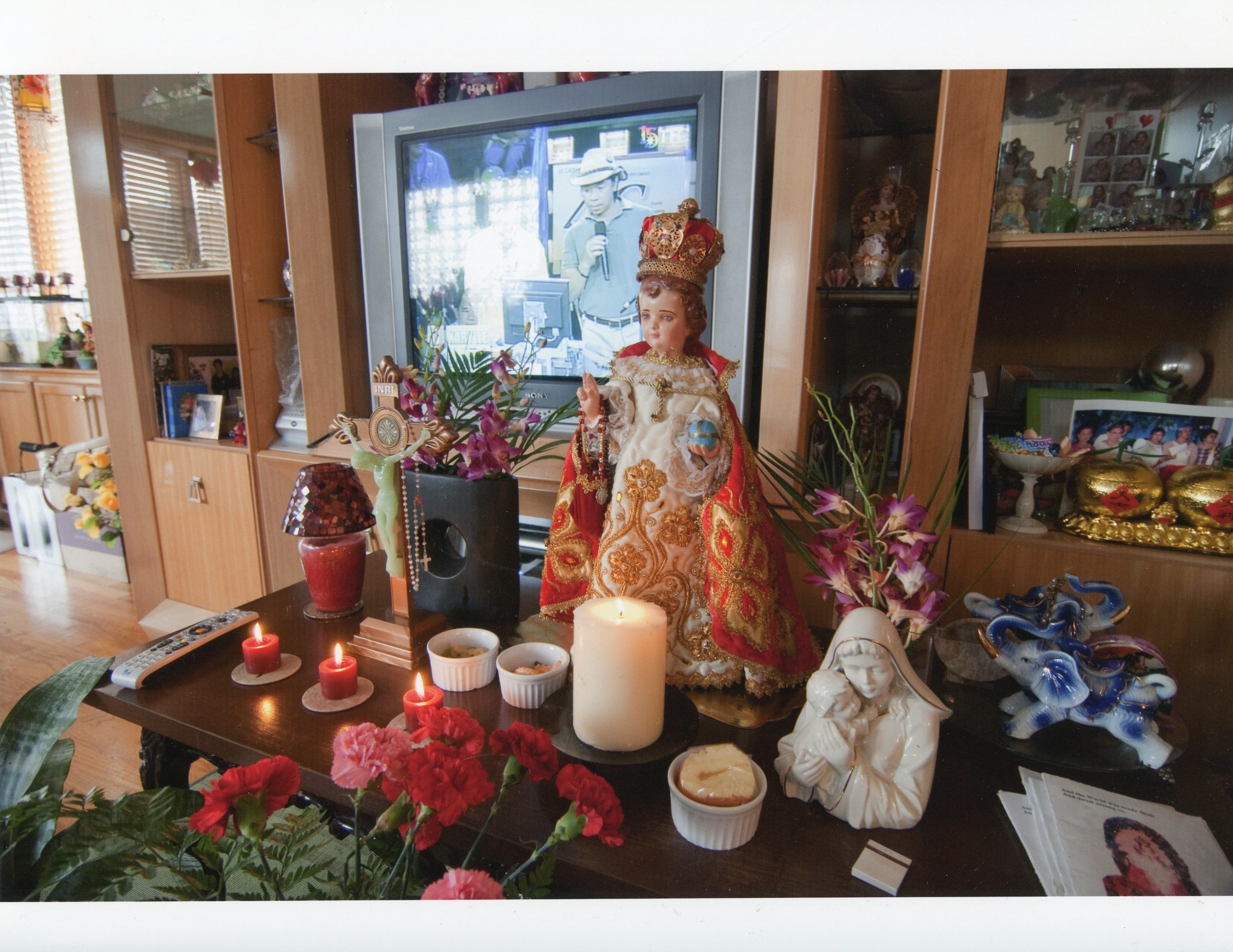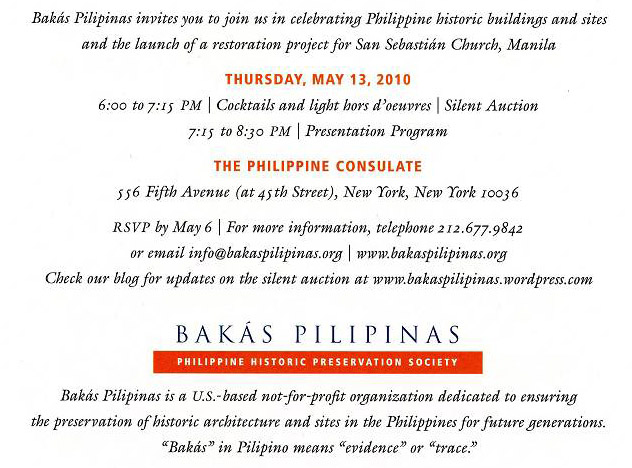Correction
Please note address change: PO Box 2706
Church Street Station
New York, NY 10008
Invitation
Please make all donations payable to Bakás Pilipinas, Inc.
Return to Bakás Pilipinas, Inc.,
PO Box 2706 Church Street Station,
New York, NY 10008
Bakás Pilipinas is a qualifying tax-exempt organization according to the IRS 501(c)(3) code.
For further information,
please call 212.677.9842, email info@bakaspilipinas.org,
or go to our website: www.bakaspilipinas.org
Brief History of San Sebastian Basilica
HISTORY OF SAN SEBASTIAN BASILICA
The restoration of San Sebastian Basilica is a focus of Bakas Pilipinas’ fundraising efforts. Inaugurated in 1891, the church is the only all-metal building in the Philippines. After the first three churches at the site were destroyed by earthquakes, the colonial insular government of Spain decided to build the church in steel, in lieu of traditional brick and stone to better withstand future tremors.
The structure was forged at a foundry in Binche, Belgium, shipped to Manila in parts and assembled on site over the course of two years. Painted glass windows were imported from the Henri Oidtmann Company, an internationally renowned German stained glass studio. The entire interior is faux-finished to simulate jasper and marble, with trompe l’oeil renderings of angels, saints, modillions and coats of arms painted by the school of Lorenzo Rocha, who had as his students Isabelo Tampingco and Feliz Martinez, celebrated turn of the century Filipino painters
With the exception of its exterior paint finish, the structure has remained true to its original design. Today, the church exhibits deterioration from corrosion due to water leaks, causing damage to the metal plates and interior murals.
San Sebastian Basilica is one of the Philippines’ historical and artistic treasures, a showcase of the works of turn of the century Filipino artists. It is significant as well for its unique construction technology. This type of all metal structure, generically referred to as an “Eiffel” structure – after Gustave Eiffel, designer of the Eiffel Tower in Paris – was typically fabricated in France, Belgium and Germany and shipped for assembly in Spanish colonies throughout South and Central America. There are strong links to Gustave Eiffel as designer, but this is still subject to confirmation. Eiffel’s work includes several steel structures built in the Philippines and there is a reference to a “steel church” in Eiffel’s archives.
San Sebastian Basilica was designated as a National Historic Landmark by the Philippine National Historical Commission and is listed in the 2010 Watch List by the World Monuments Fund.
The Basilica is the result of collaborative design and construction work in the 19th century by the Filipinos, Spanish, French, Belgians and Germans. Please help support the restoration of this irreplaceable world treasure.



![Bakas-RSVP-041910[1]](http://static1.squarespace.com/static/56433cbce4b0ccf90c6bd573/57671fc9bb7f1e6fb30c30e2/57671fcabb7f1e6fb30c30f5/1466376138437/bakas-rsvp-0419101.jpg?format=original)
![Photo san sebastian exterior[1]](http://static1.squarespace.com/static/56433cbce4b0ccf90c6bd573/57671fc9bb7f1e6fb30c30e2/57671fd0bb7f1e6fb30c3147/1466376144246/photo-san-sebastian-exterior1.jpg?format=original)

![Interior-Aisle Low Res by T Paterno[1]](http://static1.squarespace.com/static/56433cbce4b0ccf90c6bd573/57671fc9bb7f1e6fb30c30e2/57671fd0bb7f1e6fb30c3145/1466376144208/interior-aisle-low-res-by-t-paterno1.jpg?format=original)